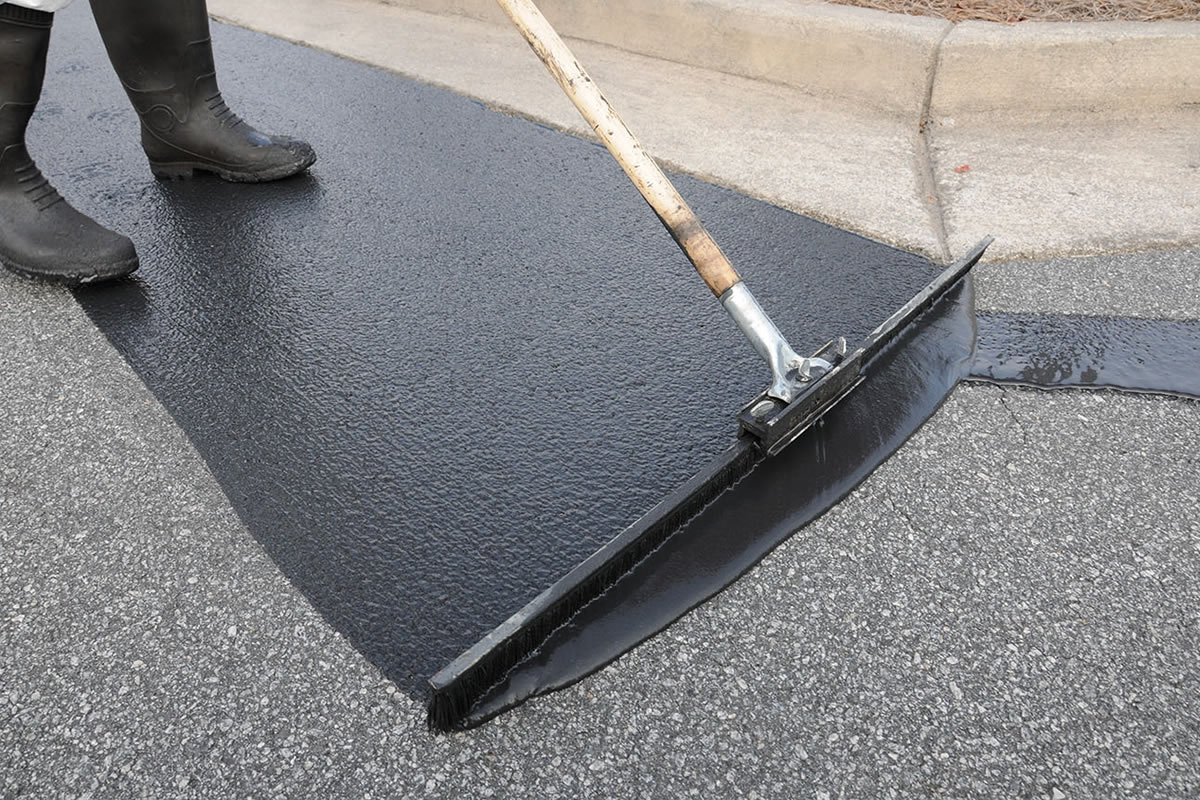
The process of applying a protective coat to asphalt pavements, otherwise known as sealcoating, is impacted by temperature and a variety of other weather conditions. Therefore, deciding when the best time is to complete a seal coating project requires a clear understanding of how factors such as cloud cover, wind, sunlight, humidity, and temperature play a role in the drying and curing process of a sealcoat.
In order to provide customers with a long-lasting, high-quality finished product, sealcoating contractors consider the weather when approaching a sealcoating job. It's a costly mistake to sealcoat in less-than-ideal weather conditions that can cost a company money and time.
Weather conditions help determine how quickly sealcoat material dries and cures and how well the material adheres to the pavement. Ideal weather conditions are required for successful sealcoating, and sealcoating professionals consider precipitation, sunlight, temperature, and humidity before beginning a sealcoat job. Understanding how conditions like pavement surface temperature affect the finished product makes it easier for you to schedule a sealcoating project and get the best results possible.
The best time of year for sealcoating varies from location to location. This is because sealcoating pavement depends on two main factors, rainfall, and temperature. The best time to sealcoat blacktop is when temperatures are very warm- 70 degrees and up, sunny conditions, and low humidity. It can be challenging to have all of these conditions combined perfectly when you need your asphalt coated, but finding a day that meets sunny and dry conditions will increase your chances of proper curing and drying.
Sealcoating professionals consider what days a customer hopes to have their sealcoating project done and weather conditions to schedule a time for the job that has the highest chances of the longest-lasting protection. For example, if the weather forecast calls for rain within 24 hours of sealcoat application, or even if rain fell the night before the project, most professionals will not attempt to sealcoat a surface because water will prevent proper drying.
The optimal temperature range for sealcoating in Sanford is between 55 and 90 degrees Fahrenheit. The ideal temperature starts around 70 degrees Fahrenheit in the morning and increases throughout the afternoon. The surface and air temperature must be no colder than 55 degrees Fahrenheit to prevent increasing the drying time and affecting the performance of the finished coating. Air must be no colder than 55 degrees Fahrenheit at any point within 24 hours of applying the sealcoat material. In most cases, warmer weather is ideal when it comes to the drying time for sealcoating.
In many locations in the United States, the answer to this question is no. It would be best if you did not seal coat asphalt in the winter. There are some exceptions to the rule as southern states can sometimes maintain higher temperatures during the winter months.
It is too cold to apply a sealcoat to asphalt if the temperature is below 50 degrees Fahrenheit. The finished product can experience separating and peeling if low temperatures fall to freezing or below while the coating dries because the water in the seal coat material could freeze.
Sweltering conditions can affect the integrity of sealcoating, just like cold weather. Temperatures above 95 degrees can bake the sealcoat before it properly adheres to the pavement. The binder used in most sealcoating can melt at temperatures above 100 degrees Fahrenheit. To avoid problems, always choose a professional sealcoating contractor with the experience to know how to deal with sealcoating in Sanford.